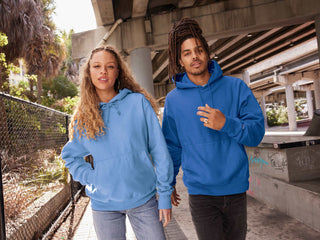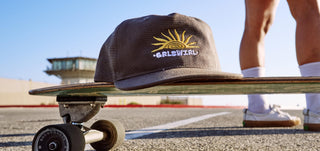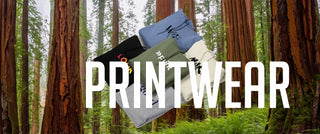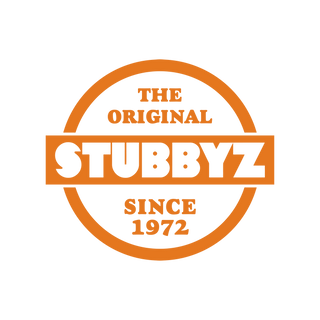Why are there minimums in screen printing and embroidery?
Printwear has 48 pc. minimum order quantities (MOQs) for screen printing and embroidery. Promotional products and hard goods have different minimums and some don't have MOQs.
MOQ = 48 pcs. for decorated products
Why is that? What are the alternatives for less quanity?
You're right, minimum order quantities are a common thing in screen printing and embroidery, as well as across most promotional and decorated products. Direct-to-Garment (DTG) is one type of decoration that often skips or reduces minimums. There are several reasons for this. Let's explore.
Cost Structure
Setup Costs: Both screen printing and embroidery (pad printing, laser etching/engraving, etc.) require significant setup for each design. For screen printing, this includes creating screens (one for each color), prepping the machine, and getting everything aligned. These costs are largely fixed, regardless of the number of items printed. So, printing just a few items wouldn't cover the setup and makes the whole process unprofitable.
Thus, you will almost always find a screen or setup charge to cover these associated fixed costs.This can include, basic art preparation, film production, screen preparation, setup, and alignment.
Efficiency: Setting up and running the printing press or embroidery machines takes time and labor. For smaller orders, this time may not be justified compared to the revenue generated. Imagine spending an hour setting up a job just to print or stitch one t-shirt or cap. MOQs ensure a minimum workload that makes the process efficient.
Material Usage: Certain materials, like ink and threads, come in specific quantities. Using them for a tiny order might be wasteful and increase costs. This makes color matching to Pantone colors prohibitive or matching thread color equivalents to a logo. A lot of time, testing and ordering in custom inputs are required to color match and approximate matching.
Quality Control
Consistency: Smaller orders might be more prone to inconsistencies or errors due to the increased setup and handling per item. MOQs help maintain a certain level of quality control and consistency. They also have error rates factored in and absorb a percentage of replacement of goods damaged in production. It is common enough to have a % dedicated to error on every job.
Minimum Quality for Techniques: Screen printing and embroidery can have limitations for very small details or intricate designs. Setting a minimum quantity ensures designs have enough space and detail to be rendered properly. This is becoming more and more common with multiple placement(s). A left-chest print and a back print is effectively two jobs. Add a sleeve and it's three. Add a back yoke and it's four. Relabel or tagless pad printed label and it's 5. On a dark shirt, every placement requires an additional screen to be underbased (white base) to ensure color correctness.
Business Sustainability
Profitability: Printing companies need to cover their overhead costs, which also include lease, equipment, salaries, etc. MOQs ensure a minimum revenue that helps with financial stability and viability.
Alternatives
Direct-to-Garment (DTG): DTG avoids these constraints because it's a digital process and doesn't require screens or setup per design. However, it may have limitations in terms of material types, ink longevity, and detail compared to traditional methods.
Direct-to-Film (DTF): DTF printing is becoming popular as an alternative solution for t-shirt and garment customization. By printing designs directly onto a film, the ink can be easily transferred onto a desired fabric or material, making it possible to produce highly detailed graphics.
Ultimately, MOQs are a balancing act between ensuring profitability for the decorator and offering flexibility for customers. While 48 pcs. are Printwear's typical minimums, some products like pens and decals may be higher and lower options still remain available - but at higher costs. Custom quotes for smaller orders, especially samples are welcome and costs can be reduced on full runs to remove the inflated sampleted costs to produce a couple items.
In conclusion, minimum order quantities (MOQs) exist in screen printing and embroidery due to several reasons. Setting up the machines, creating screens, and ensuring quality control all incur costs that wouldn't be covered by small orders. MOQs guarantee a minimum workload for efficient production and consistent quality.
If you need smaller quantities, consider alternatives like DTG or DTF printing. While Printwear's standard minimum is 48 pieces, we offer all-inclusive pricing for standard decoration methods up to a certain number of stitches or colors. Remember, for non-standard requests, custom quotes are always welcome.
About Printwear
Printwear.io is your one-stop shop for turning ideas into impressive realities on anything from apparel and drinkware to bags and notebooks. Printwear uses cutting-edge decoration methods to make your designs pop, offering a variety of services including:
- Custom Apparel: Create branded t-shirts, hoodies, hats, and more.
- Promotional Products: From bags and blankets to pens and notebooks, Printwear.io helps you promote your brand or create personalized gifts.
- Design Services: Need help with your design? Printwear.io's team can guide you.



















